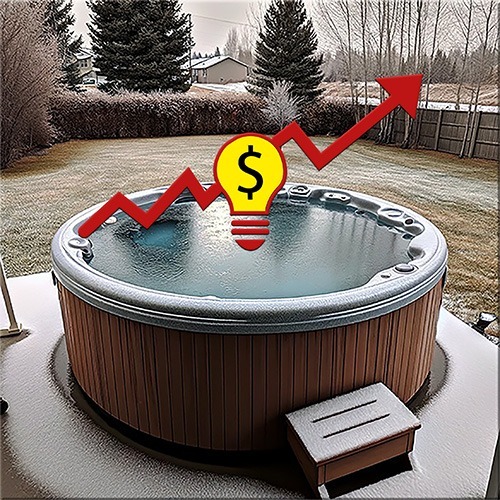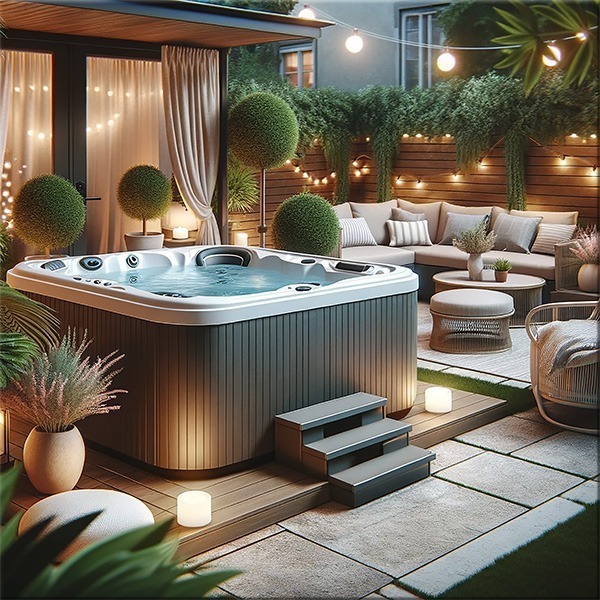In the realm of home relaxation and luxury, hot tubs are often the crown jewels — a private retreat where you can unwind, recharge, and connect with the people you love.
But traditional hot tubs can come with their own challenges — high installation costs, electrical requirements, and ongoing maintenance. Enter the plug-and-play hot tub — a simpler, more accessible spa experience designed for convenience and affordability.
Before deciding if this type of hot tub fits your lifestyle, let’s soak in the real pros and cons.
Pros of Plug-and-Play Hot Tubs:
1. Affordability & Convenience
One of the biggest draws of plug-and-play models is their cost-effectiveness. Because they use a standard 110-120V outlet, you don’t need to hire an electrician or install a dedicated 220V line.
This makes the upfront cost significantly lower — both in purchase price and setup. They’re ideal for homeowners or renters who want a hot tub experience without the major financial commitment.
2. Portability & Flexibility
Plug-and-play hot tubs are lighter and easier to move than traditional hardwired models. This makes them perfect for renters, frequent movers, or anyone who likes to rearrange their outdoor space.
Whether you live in a townhouse, condo, or home with a small backyard, these spas adapt easily to your setup — and if you move, your tub can come with you!
3. No Electrical Hassles
No electrician? No problem! Plug-and-play models use the same outlet you’d use for standard household appliances.
There’s no need for wiring permits, trenching, or waiting for professional installation. Just plug it into a dedicated 15- or 20-amp outlet, fill it with water, and enjoy.
⚡ Note: Always use a GFCI-protected outlet to ensure safety.
4. Variety to Fit All Spaces
From cozy two-person tubs to larger models that seat four or more, there’s a size and shape for almost any environment.
You’ll find models that look beautiful on:
Small patios or balconies
Covered porches
Backyard decks or second-story balconies
These compact, portable designs bring spa luxury to even the most limited outdoor spaces.
5. Potential for Upgrades
Many plug-and-play models can be converted to 220V later on, allowing you to boost performance once you’re ready.
When converted, your spa gains faster heating times, stronger jet pressure, and better energy efficiency. It’s an excellent option if you want to start small and grow your spa experience over time.
Cons of Plug-and-Play Hot Tubs:
1. Electrical Trade-Offs
The simplicity of plug-and-play models comes with one compromise — lower voltage power.
Since they operate at 110-120V instead of 220V, the heater and pump share limited electrical capacity. This means:
You can’t run all features (heater + jets on high) simultaneously.
The jets are typically less powerful than those on traditional models.
The components may work harder to maintain performance, leading to shorter lifespans or higher energy draw.
2. Limited Features & Jet Power
Because of their power limitations, plug-and-play hot tubs often include fewer jets, and the ones they have provide a gentler massage experience.
You may not find high-end options like multiple pumps, advanced filtration systems, or programmable LED lighting — though many brands now offer premium plug-and-play models that still feel luxurious.
3. Slower Heating Time
If you crave instant warmth, you’ll need a little patience. Plug-and-play hot tubs heat more slowly because of their smaller heater wattage.
A 220V spa may reach 104°F in 8-10 hours.
A plug-and-play model? Up to 24 hours or more to reach full temperature.
Once heated, the water maintains its warmth fairly well, but if you live in a cold climate, the initial heat-up time can feel long. 🕰️

4. Cold-Weather Performance
In colder regions, plug-and-play tubs may struggle to maintain temperature, especially when the cover is open during use.
The smaller heating element cycles on and off more often, increasing energy usage and stress on the system.
If you live in a place with harsh winters (hello, Idaho ), investing in extra insulation, a thermal blanket, or a full-foam cabinet can make a big difference in performance and energy efficiency.
5. Durability & Energy Efficiency
Because smaller pumps and heaters must work harder, they may wear out sooner than their 220V counterparts. The trade-off for easy setup is often slightly higher long-term energy costs and maintenance over time.
That said, quality brands have come a long way — many plug-and-play models now include energy-saving insulation and efficient components designed to handle moderate climates.

Gentler Hydrotherapy, Still Relaxing
While plug-and-play jets won’t give you the deep-tissue massage of a full-size spa, they’re perfect for gentle muscle relaxation, stress relief, and daily decompression.
Think of them as your personal mini-spa for tension relief and quiet moments — without the heavy price tag or installation headaches.
Takeaways
Plug-and-play hot tubs are ideal for those who want the benefits of hydrotherapy and relaxation without the cost and complexity of a traditional 220V spa.
They’re easy to set up, portable, and cost-friendly — perfect for renters, first-time owners, or anyone who wants a simple soak at the end of the day.
However, if you crave powerful jets, fast heating, and all the premium features, you may eventually prefer a full-sized, hardwired model.
Frequently Asked Questions About Plug-and-Play Hot Tubs
A plug-and-play hot tub is a 110-120V spa that connects to a standard household outlet—no electrician or hardwiring needed. Just fill it, plug it in, and relax.
Yes, you can! ❄️ However, performance can vary depending on outdoor temperatures. To retain heat efficiently in cold climates, we recommend adding insulation upgrades, using a thermal blanket, and always keeping your cover secured when not in use.
Because these models use smaller heaters, expect heating to take 12–24 hours to reach 104°F from cold water. Once it’s warm, it maintains temperature quite well—especially with proper insulation and a fitted cover.
Many models are convertible! Upgrading to 220V increases jet power and heating speed. You’ll need a licensed electrician for the conversion and a dedicated breaker, but it’s an easy way to level-up your spa when you’re ready.
They’re designed for convenience, not maximum efficiency. While they use less power overall, the smaller heater may run longer to maintain heat, which can balance out the savings. Look for models with high-density insulation and locking covers to reduce energy use.
With good care—balanced water chemistry, regular filter cleaning, and proper winterizing—a plug-and-play hot tub can last 10–15 years or longer.
They provide a gentle hydrotherapy experience rather than a deep-tissue massage. Perfect for relaxation and stress relief, though less intense than a 220V spa.
Plug it only into a dedicated 15- or 20-amp GFCI outlet. Avoid extension cords, power strips, or outlets shared with other devices for safety and optimal performance.
Routine upkeep includes:
– Testing and balancing water chemistry 2–3 times a week
-Cleaning filters monthly
– Draining and refilling every 3–4 months
-Checking cover seals and insulation seasonally
They’re perfect for:
Renters or people who may move soon
First-time spa owners
Homeowners wanting a compact, easy spa
Anyone wanting stress relief without the complexity of a full-size installation
Reference
- Homes & Gardens – “Inground vs plug-and-play hot tubs – which is best?”
The Yard Scout – “Consumer Reports’ Best Hot Tubs: Unbiased Ratings and Top Picks for 2025”

